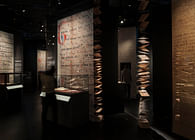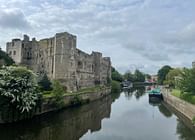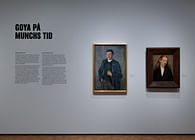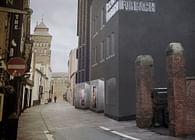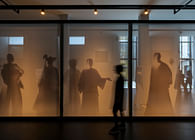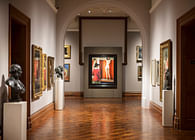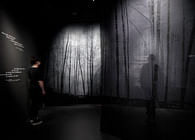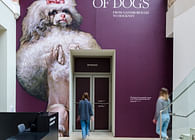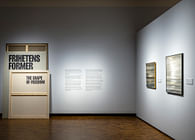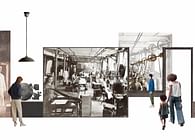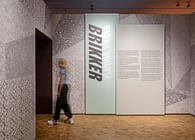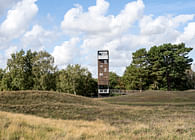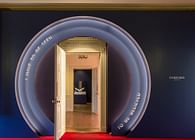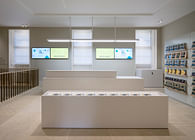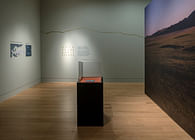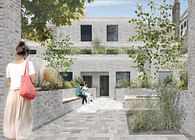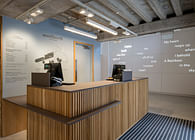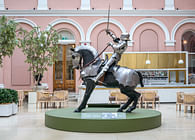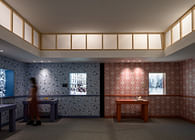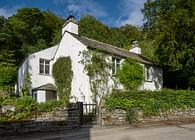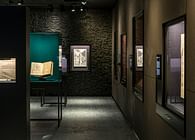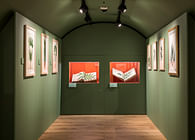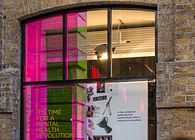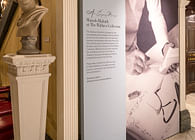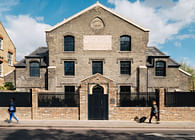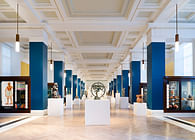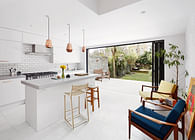
London, GB
Nissen Richards Studio has completed the design of an immersive labyrinthine exhibition at The National Library of Norway in Oslo, focusing on fictional character Harry Hole - ‘Oslo’s number one detective’ - created by multi-million-selling Norwegian author Jo Nesbø in his hugely-popular crime series. The exhibition, entitled ‘Labyrinth: Tracing Harry Hole’, is located in the Library’s 195 sq m first floor temporary exhibition space.
This is the third exhibition Nissen Richards Studio has completed for The National Library of Norway, with previous projects including a temporary exhibition on the craft of bookmaking in the same gallery and a permanent exhibition called Opplyst, located on the Library’s ground floor, featuring 30 objects embodying and illuminating key moments of Norwegian history. This striking exhibition went on to win a Gold Award in the International Institutional Interior Design category of the London Design Awards 2020.
A quote by author Umberto Eco formed part of the client’s conceptual thinking for the new exhibition, as cited in the project brief: ‘The starting point is partly inspired by Umberto Eco’s statement in his preface to ‘The Name of the Rose’ that people primarily enjoy crime fiction because it invites them to guess at the solution.’
The form of the exhibition is inspired by the idea of the labyrinth, where the visitor, just like the hero detective of Nesbø’s books, follows a number of winding paths, whilst tracing threads of clues. The literal idea of a thread also relates to the labyrinths of classical Greek mythology, where Ariadne follows a thread through a labyrinth created for her by Theseus.
‘The labyrinth forms the framework of the new exhibition’ Nissen Richards Studio Director Pippa Nissen explained, ‘and is also the exhibition’s philosophical, ethical and even mythical inspiration. In a traditional labyrinth, there is no centre or alternative way out - only the possibility of following the thread. The treatment of subject matter in Jo Nesbø’s crime novels - and the city he locates them in - is both theatrical and forensic, focusing on the gathering of evidence. Here, it’s as if the visitors themselves are characters, experiencing clues, evidence and context whilst using Inspector Harry Hole’s research-based methodology.’
The exhibition is made up of a series of spaces which explore different themes relating to the Harry Hole novels. The visitor discovers a series of rooms within the labyrinth, as if negotiating a real city and coming across fragments of evidence. Themes that spin out of Jo Nesbø’s books and Harry Hole’s methodology are widened and examined, making use in part of the library’s incredible resources of reference books on everything from old city maps, forensic illustrations and medical diagrams of the human body to the history of Norwegian prisons as illustration.
A model of the labyrinth is introduced at the outset, serving as a map, so that visitors know what kind of journey they’re embarking on. Maps also have a special place in the Harry Hole novels, with Hole often actively using a map to find messages left by a killer or to decode secrets the killer is trying to conceal. Their route through the space includes curved plywood ‘labyrinthine’ walls. Recognising that a sense of place is important to us as humans, Nesbø always makes a point of describing the geography of the setting, starting with the human body and the experience of being. The aforementioned thread, meanwhile, finds form in the exhibition as a wandering red line, painted on the walls and floor.
When visitors first arrive, they are met by a towering, theatre-scale graphic wall in a dramatic black, grey and red colourway, including three doors and with a giant fingerprint integrated into the design. Visitors are directed towards the seemingly ‘correct’ entrance, only to find the route is actually a cul-de-sac ending in a trick door that opens onto a library shelf of books. The visitors then come back out and go through the real door, understanding immediately that their path through the exhibition will not be straightforward and that the exhibition will encompass both clues and dead ends.
Themes and sub-themes are contained within capsule areas or miniature ‘rooms’ set between the curving plywood walls, with individual displays centring on books, manuscripts and translations. The objects on display include precious items relating to the author directly, such as manuscripts and reader reports, and else historic objects presented in either showcases built into walls or framed and placed behind apertures – or, finally, reprinted Nesbø books, with quotes underlined in red pen, mounted on a wall or with a cradle mounting bracket.
A ‘Police Procedural’ area uses four angled cameras to film visitors as they go through the exhibition in real time, underscoring the idea of surveillance, whilst a ‘crime wall’ mimics the visual language of an actual crime investigation wall, with backlit negatives and mugshots, including mirrored areas so that visitors can see their own faces in amongst the potential suspects. Prisons and education form the subject of further theme areas, as well as Jo Nesbø the writer himself, with a window at one point through to a display of his books within The National Library.
Head of Exhibitions at The National Library of Norway, Marte-Kine Sandengen, commented: “Nissen Richards Studio has once again transformed the listed exhibition room of The National Library of Norway to create a completely new experience for our visitors. The labyrinth, forming a curated pathway through central aspects of the Harry Hole novels, is a beautiful construction in itself, whilst also working in harmony with the existing interior. It’s been a pleasure working with the Nissen Richards Studio team on this project, which has allowed such dramatic visual expression.”
Status: Built
Location: Oslo, NO
Firm Role: Exhibition designer, graphic designer
Additional Credits: Photography by Gareth Gardner





